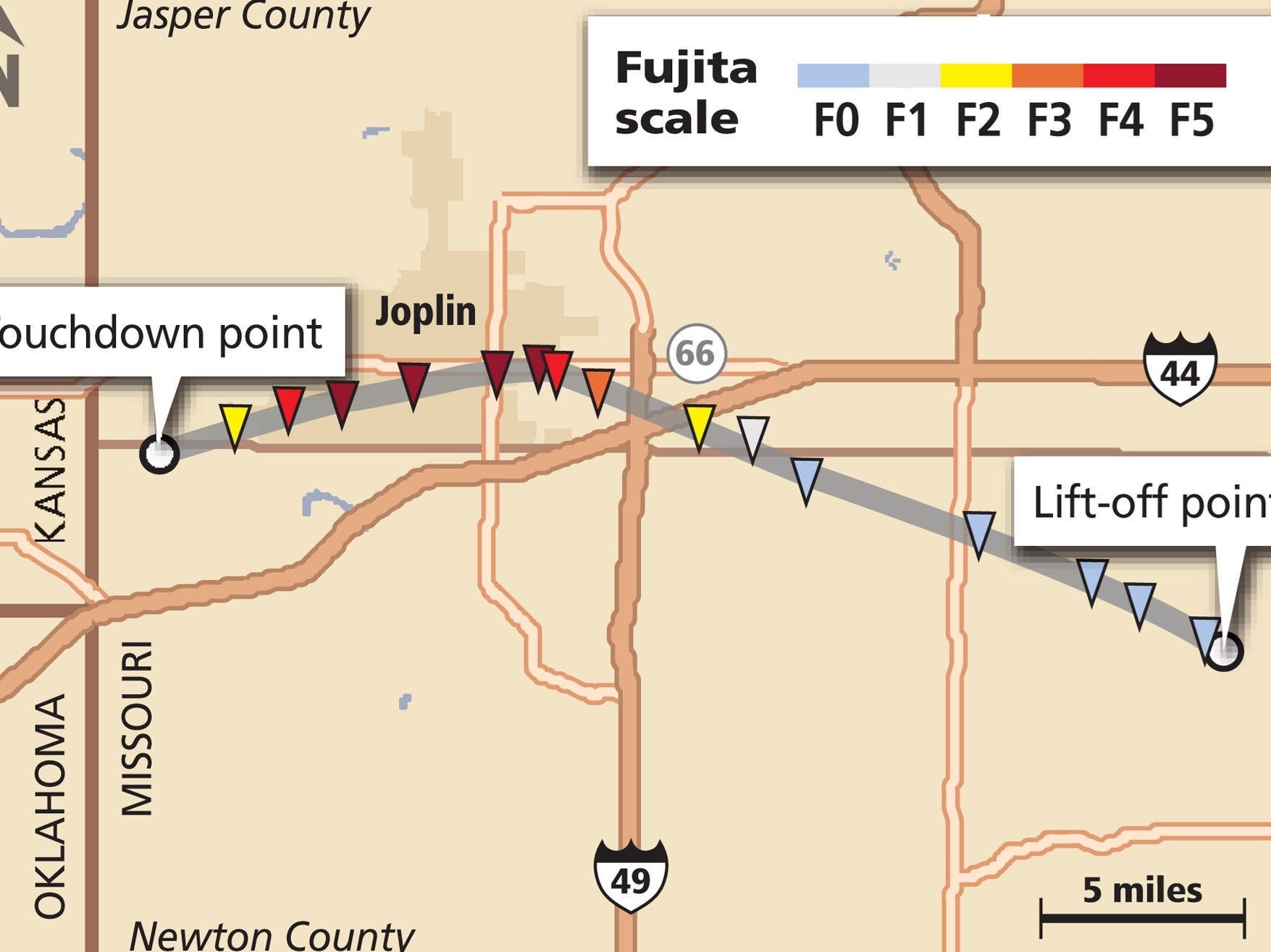
One television meteorologist advised people to get in their cars and flee, putting some at grave risk.Another improvement in the last 15 years is that more residents of Oklahoma have rebuilt their homes with storm shelters or safe rooms, which also may have saved lives.

Census data.Forecasters did not perform as well on May 31 when a second monster storm system bore down on the area and another 20 people were killed.

This compares with 40 in 1999 even though the population of Moore has risen more than a third since, according to U.S. Prevatt believes they can be built but with new housing materials.UNIQUE LABORATORYMoore, Oklahoma is a unique laboratory to study construction and tornado damage because it has been hit by four tornadoes in the last 15 years, including a 1999 storm similar to May 20.Better advance warning systems through the National Weather Service and the news media are credited with what some call a remarkably low 24 fatalities from the May 20 Moore tornado.
JOPLIN TORNADO COST CODE
“That is the official definition of insanity.”Oklahoma should follow the example of Florida after Hurricane Andrew in 1992 and adopt a tougherbuilding code to reduce damage in future, said Prevatt, Assistant Professor of Civil and Coastal Engineering at the University of Florida.Most experts cautioned that even a strengthened building code would probably not lead to homes that could survive unscathed from an EF5 tornado. government are footing a mounting bill from damage that could be limited with better construction, according to several engineers, meteorologists and consumer advocates interviewed by Reuters.”We have to stop this cycle of a storm coming along destroying things and we build them back the same,” said Leslie Chapman-Henderson, chief executive of the Federal Alliance for Safe Homes, a consumer group. But even in a relatively quiet tornado year, economic losses from severe thunderstorms reached $28 billion in 2012 and insured losses $14 billion, Munich RE said.The Moore, Oklahoma tornado on May 20, and associated storms, could cost up to $5 billion in insured losses, disaster modeling company Eqecat has estimated, making it the second costliest tornado outbreak on record after Tuscaloosa.Damage costs are rising because of increased population density, even in mostly rural states such as Oklahoma, which has seen substantial urban sprawl in the last decade, said Greg Carbin, Warning Coordination Meteorologist for the National Weather Service’s Storm Prediction Center in Norman, Oklahoma.Another important reason that has received less attention, is that most homes in tornado alley are not built to withstand even a modest tornado.The result is that residents of tornado alley, insurance companies and the U.S. in 2011 – the year of Joplin and Tuscaloosa – with an estimated $47 billion in overall economic damage, and insured losses of $26 billion, Munich RE said.Tropical storms topped the natural disaster list in 2012 because of Hurricane Sandy. history, according to an analysis by insurer Munich RE.Tornadoes were the costliest natural catastrophes in the U.S.

tornadoes.”This notion that we cannot engineer buildings economically to withstand tornado loads is a fallacy,” said Prevatt, who has studied damage from hurricanes and the devastating tornadoes in 2011 in Joplin, Missouri and Tuscaloosa, Alabama.The cost of damage from tornadoes is soaring in the United States even though National Weather Service historical data shows no significant rise in the number of storms.The last five years have seen the highest losses from thunderstorm damage in U.S.

REUTERS/Lucas Jackson By Greg McCune(Reuters) – In a residential neighborhood near the center of a monster tornado that struck Moore,Oklahoma last month, two partially damaged houses stand like an island among others flattened by the storm.The walls and roofs of the buildings in a new housing development called Featherstone Addition are still upright while there is nothing left but a concrete foundation where other homes once stood nearby.The two homes were not completely spared but are salvageable, according to David Prevatt, a civil engineer who saw them when he surveyed the damage after Moore took a direct hit from an EF5 tornado, the strongest rating.He is convinced that the two houses survived because they were built stronger than most in Oklahoma and the rest of “tornado alley” – the region stretching from Texas to Iowa that accounts for roughly a fourth of all U.S. View PhotoReuters/Reuters – Memorial Day fireworks explode over a house damaged by the May 20 afternoon tornado in Moore, Oklahoma May 26, 2013.


 0 kommentar(er)
0 kommentar(er)
